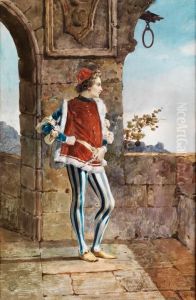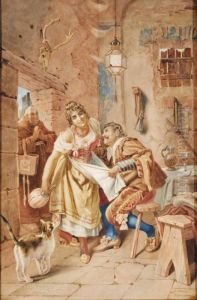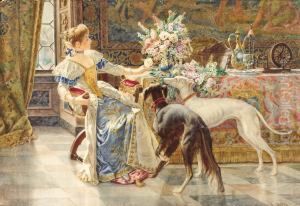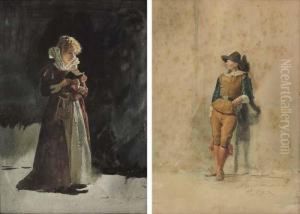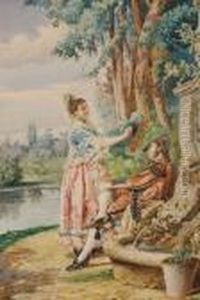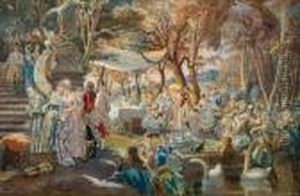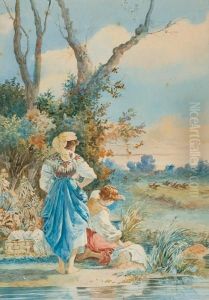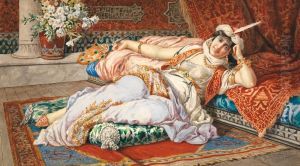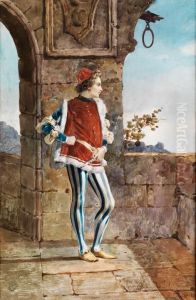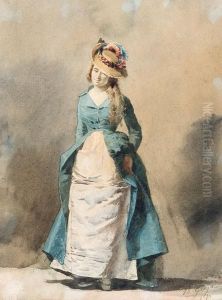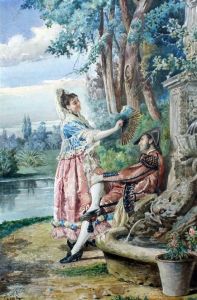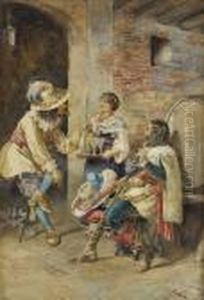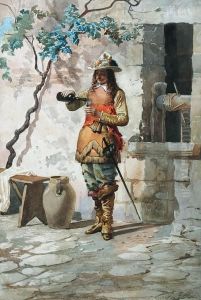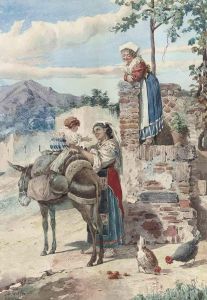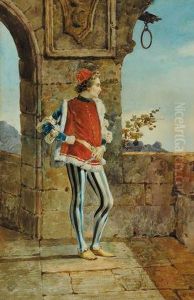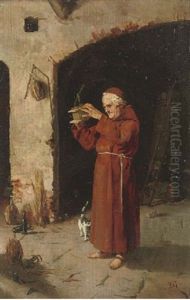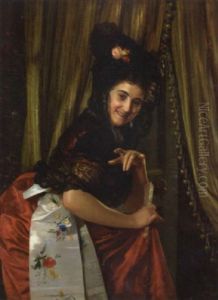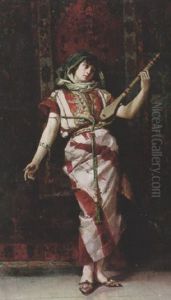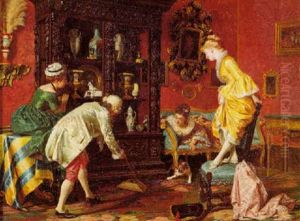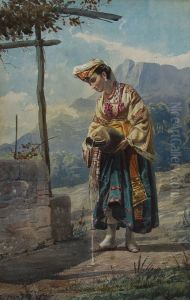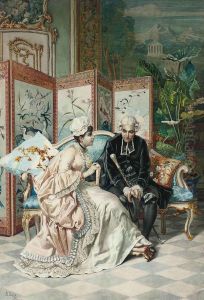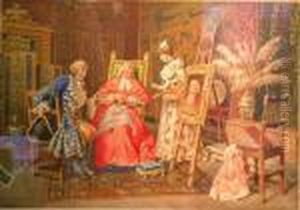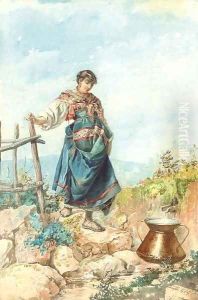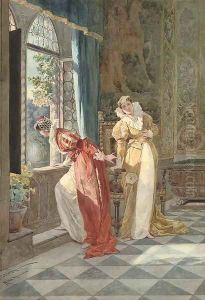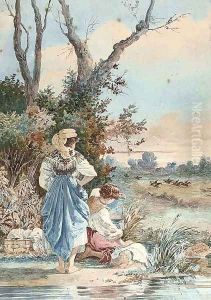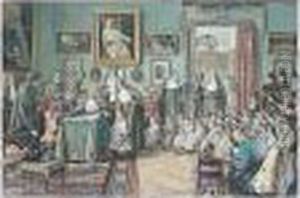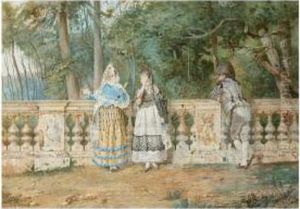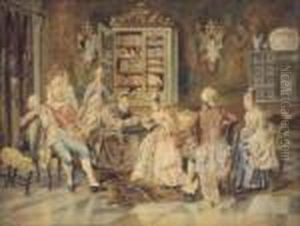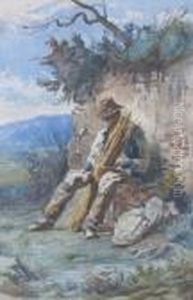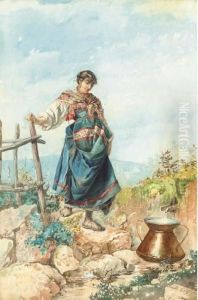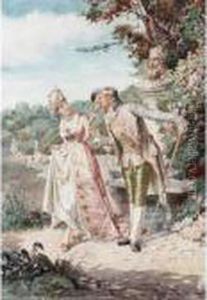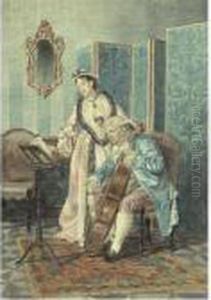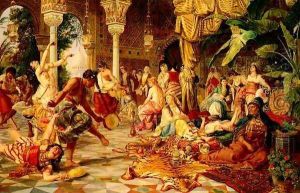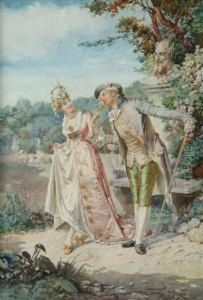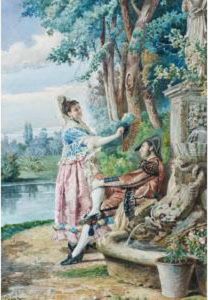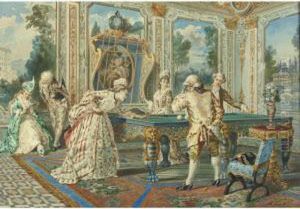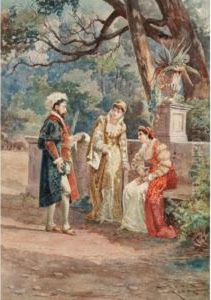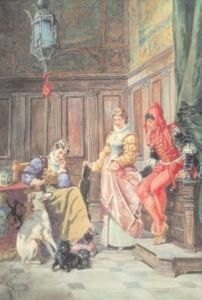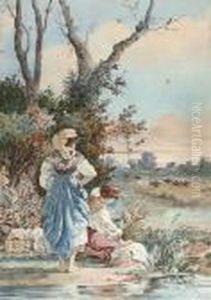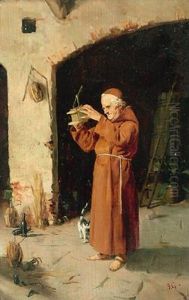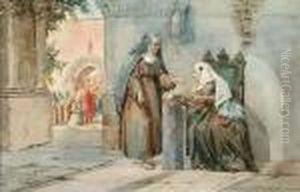Belisario Gioja Paintings
Belisario Gioja was an Italian painter, primarily known for his works in the Romantic style. Born on October 27, 1829, in Milan, Italy, Gioja was part of the artistic movement that emphasized emotion and individualism, a stark contrast to the classical forms and strictures of the art that came before. His works often depicted historical and literary subjects, as well as scenes from everyday life, characterized by their vivid detail and emotional intensity.
Gioja's education in the arts began at the Brera Academy in Milan, where he studied under prominent artists of the time. His talent was recognized early in his career, and he received accolades for his mastery of color and composition. Throughout his life, Gioja remained closely connected to Milan and its artistic community, although his work brought him recognition beyond his hometown.
In the mid-19th century, Italy was undergoing significant political and social changes, and the unification of Italy (Risorgimento) was a theme that influenced many artists of the time, including Gioja. His paintings often reflected the contemporary spirit of nationalism and the struggle for independence, resonating with the public sentiment.
Throughout his career, Gioja participated in numerous exhibitions and won various awards. His paintings were sought after by art collectors and patrons, and his reputation as a skilled painter was well-established. Despite the popularity of his work, there is not an extensive amount of information available about his personal life, as he tended to keep his private affairs out of the public eye.
Belisario Gioja died on January 11, 1906, in Milan. His legacy is preserved in the collections of various Italian museums and institutions, as well as in the private collections of those who continue to appreciate his contributions to the Romantic movement in Italian art.
